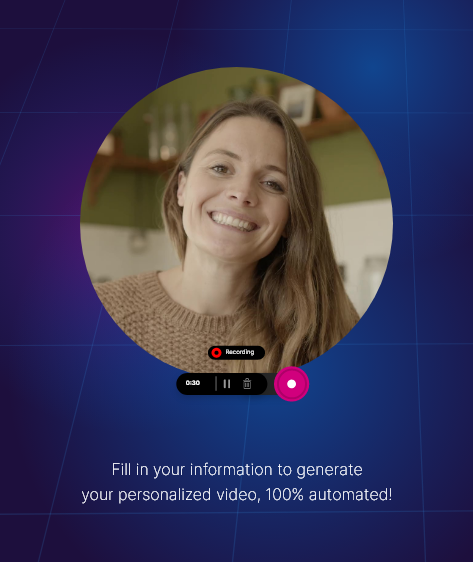Cold email has long been a staple in outreach and lead generation, but recent shifts in technology and compliance have fundamentally altered the landscape. With questions swirling about deliverability, spam filters, and whether artificial intelligence will be the final blow, many professionals wonder: is cold email dead? The short answer is no. Instead, the future of cold email is evolving—and those who adapt can still succeed. Whether you’re a seasoned sender or new to outbound campaigns, understanding these changes is crucial to thriving in 2025 and beyond.
Based on the original video:
The Evolution of Cold Email: From 2014 to Today
Cold email began as a relatively straightforward approach. Years ago, basic templates and generic mass sends could yield appointments and sales. Today, the technical underpinnings of cold email have changed dramatically. Senders face stricter spam protections, cutting-edge AI filters, and fine-tuned firewalls that scrutinize every message.
What hasn’t changed is the demand for personal connection and value. While the tactics and technology have advanced, the fundamental goal remains: get your message in front of qualified prospects in a way that prompts engagement.
Why Deliverability Has Become So Challenging
Deliverability—the percentage of your cold emails that actually land in the primary inbox—has dropped sharply for many senders. Not only are spam filters more robust, but new artificial intelligence systems now scrutinize email content using advanced natural language processing (NLP), semantics, and sentiment analysis.
For a message to be classified as spam by major providers like Google and Microsoft, two factors must be true: it must be bulk and unsolicited. This definition means nearly all traditional cold outreach risks immediate spam filtering. To make matters more complex, cold emailers have historically circumvented these filters by:
- Sending low volumes from many accounts
- Making accounts appear unrelated or disconnected
- Personalizing content to seem familiar
Major email service providers have caught on and now use machine learning and AI to detect patterns that reveal mass outreach attempts—making these tricks less effective every year.
Understanding the “Black Box” Effect
Service providers have introduced a “black box” system to combat abuse. Instead of outright blacklisting a sender (which users can often work around by creating a new account), suspicious users are silently assigned a poor-sending IP address. The result? Your emails may not just go to spam—they might not be delivered at all, with no bounce or error notification.
This invisible filtering creates a massive obstacle: companies continue paying for their sending accounts, not realizing messages are being swallowed into a void. Regular monitoring and feedback are more critical than ever to avoid falling into these traps.

Appointment Rates and Saturation: Why Response Rates Are Plummeting
Back in 2014, a booked appointment rate above 2% was common and expected in bulk cold email campaigns. Fast forward to today, and companies consider 0.5% a win. Saturation has taken its toll—more people are sending more emails, leaving prospects inundated and desensitized.
The days of “spray and pray” are gone. Copying a boilerplate message to hundreds or thousands is no longer effective. Genuine, thoughtful messaging and tighter targeting are essential to gain even modest traction.
If you’re struggling to maintain cold outreach results, understand this drop is an industry-wide trend, not an isolated failure.
Industry and Regulatory Shifts: Blacklists and Legal Opt-Outs
Another major change: companies can now request removal from public databases, such as those scraped by popular B2B data providers. They’re also increasingly adding their domains to blacklists, not just to catch spam but to enforce legal boundaries on unsolicited outreach.
This trend introduces both compliance and technical risk. If a company opts out and you send an unsolicited message, you risk both blacklists and potential legal threats—especially for larger organizations.
As legal frameworks tighten and enforcement steps up, conducting regular list hygiene and only targeting legitimate prospects is paramount. For a strategic guide on maintaining high-quality lists, see Verify & Replace Stale Leads Before Cold Emailing. This resource details how to identify outdated leads and keep your outreach effective.
Firewalls and Scam Protection: Outsmarting Sophisticated Filters
Cybercriminals have also adopted cold email sending techniques, using tactics like “snowshoeing” (sending low numbers from many different accounts or domains) to perpetrate fraud. As a result, company firewalls and email gatekeepers have grown sharper, using identity checks and behavioral analysis to block suspicious messages.
Getting through now requires establishing genuine sender authority and credibility—both at the company and individual level.
The Future of Cold Email: What’s Next?
1. Authority and Credibility Are Mandatory
Major email providers are increasingly requiring senders to demonstrate both company and individual credibility. Accounts with no real online presence, or those that appear to mimic real people but can’t be verified, are more likely to see emails suppressed or attributed to poor-sending IPs.
This mirrors changes in SEO, where anonymous or AI-generated content is devalued. Maintaining a professional web presence, authentic social profiles, and consistent communications is becoming necessary for all team members involved in cold outreach.
2. The Decline of Automated “Warm-Up” Pools
Email warm-up tools—where automated services send test emails between bot accounts—can still help but are less effective than they once were. Providers like Google and Microsoft are starting to look for real, positive interaction from authentic, aged domains and accounts.
Thus, future success depends on driving actual replies, conversations, and organic engagement with legitimate contacts in your network—not just faking activity through automation.
3. Relevancy Is the Only Way Through
Highly relevant outreach will continue to slip through spam protections. Messages that speak directly to a recipient’s context—for example, referencing a mutual connection or recent activity—are far less likely to be flagged as spam.
To make your cold emails stand out, always answer the silent question: Why me? Why now? Tie your offer to a specific need or recent achievement. This approach naturally increases conversion as spam filters adapt to recognize and prioritize individualized communication.

4. Diversification and Infrastructure Protection
Spreading risk across platforms is becoming a smart technical strategy. Use multiple domain registrars, providers, and even service identities to ensure that a penalty in one area doesn’t cripple your entire outreach operation. Implementing redundancy and creating credible alternate sender personas can buffer against unexpected hits to deliverability.
5. Data Quality, Spam Traps, and Database Challenges
Large email data platforms are now rife with spam traps—planted email addresses that trigger blacklisting if contacted. Scraping outdated or low-quality data not only hurts engagement but can also put your domains at risk.
As a result, real-time data validation and cross-referencing are critical for any successful cold email campaign. Make sure you’re not just pulling in as many leads as possible, but actively vetting and cleaning those lists for accuracy and compliance.
Actionable Steps: How to Survive (and Thrive) in the New Era of Cold Email
Diversify Sending Infrastructure
Build out a robust framework for your outreach:
- Use several domains across multiple providers
- Maintain multiple email accounts, each with a solid sending reputation
- Create and validate alternative sender personas (where compliant)
This redundancy minimizes the risk of total failure if a particular domain or provider is impacted.
Sharpen Messaging & Perceived Value
Generic giveaways and “freebie” offers no longer cut it. Prospects evaluate not just what you’re providing but the immediate perceived value. Real-world value might be a free consulting session, an actionable audit, or access to a tool that addresses a clear pain point.
Eliminate Unqualified Prospects
Meticulous data hygiene eliminates the noise that damages your reputation and metrics. Before launching a campaign, rigorously filter out any contacts who are unlikely to benefit from your offer or who don’t fit your target profile.
If you’d like to level up your list management, there’s an excellent primer on creating an availability sheet – a tool that can help coordinate meetings and reduce endless back-and-forth communication.
Optimize Content Formatting and Spin Syntax
To reduce similarities between outbound messages—and prevent AI spam detection—use “spin syntax” to create multiple variations of core sentences. This technique helps each message appear unique, avoiding obvious duplication and fingerprints that spam filters target.
Warm Up Accounts With Genuine Conversations
Where possible, initiate real conversations with aged, reputable domains. This organic reputation-building is far more effective than relying on automation alone.
Upgrade Lead Generation Workflow
Many traditional lead generation tools rely on static databases, which become outdated quickly and are susceptible to spamtraps. Real-time email finders and on-demand scrapers offer more accurate, up-to-date contact details and mitigate risk of stale data.
Monitor and Analyze Campaign Results Relentlessly
Don’t just track open and reply rates. Dive into:
- Authentication results (DKIM, SPF, DMARC)
- Bounce rate causes and specific error codes (calling out “550” and high-spam-probability failures)
- Lack of replies from major domains (potential sign of domain blacklisting)

Early detection of these issues gives you a chance to remediate before reputational damage becomes severe.
Key Takeaways: The New Rules of Cold Email
- AI-driven filters are raising the bar: generic or obviously bulk messages rarely succeed.
- Provider “black box” systems can silently throttle undetected spammers—proactive reputation monitoring is essential.
- Company and sender authority are now prerequisites for inbox placement.
- Relevancy is the golden ticket. Personalize and justify your outreach for every prospect.
- Legal compliance and data validation must be central to your strategy.
- Infrastructure diversification helps ensure long-term deliverability.
Frequently Asked Questions about the Future of Cold Email
Is cold email still effective for lead generation?
Yes, when executed with high relevancy, proper technical setup, and strong sender authority. Results are harder to achieve than in the past, but cold email still plays a crucial role in modern outreach strategies.
How can I prevent my cold emails from landing in spam?
Focus on personalization, avoid obvious spam triggers, maintain a positive sender reputation, and use verified, up-to-date lead lists. Regular monitoring of deliverability metrics is also recommended.
What are “spam traps,” and how can I avoid them?
Spam traps are fake email addresses planted in public databases to catch senders using outdated or poorly-scrubbed lists. To avoid them, clean your data, avoid scraping massive lists blindly, and cross-check all information before launching a campaign.
How important is verifying sender authority and identity now?
It’s extremely important. Lack of a credible digital footprint or the use of obviously-fake personas dramatically increases the risk of deliverability failures and account bans.
What tools help analyze and improve cold email deliverability?
Tools like GlockApps, DMARC analyzers, and real-time email verification services help monitor deliverability, authenticate email records, and detect issues early. Always combine with manual review for best results.









